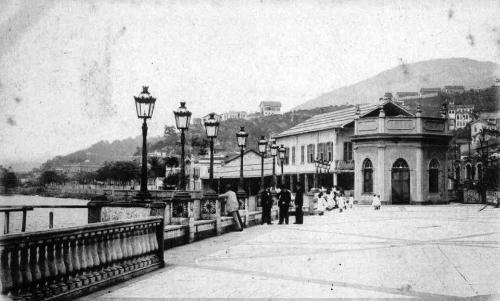PARA TRANSPORTE OU PASSEIO? PROPAGANDAS BRASILEIRAS DE BICICLETAS (DÉCADAS DE 1950-1970)
Resumo
A bicicleta é uma invenção do século XIX e chegou ao Brasil pouco antes do início do século XX. Apesar de ter sofrido poucas modificações em sua parte física desde então, seu papel social ao longo das décadas mudou muito. Inicialmente um luxo reservado aos ricos, que a utilizavam para a prática do ciclismo nos modernos velódromos, a bicicleta rapidamente se popularizou e passou a ser utilizada para outros fins, como passeio e transporte, se tornando elemento marcante no meio urbano brasileiro. O processo de popularização do automóvel no país, que se iniciou na década de 1950, entretanto, contribuiu para uma mudança no imaginário social das classes médias urbanas a respeito da bicicleta. Cada vez mais, sua função de transporte era denegrida, associada à pobreza, e o discurso publicitário, dialogando com o seu público, passava a representá-la como instrumento para o lazer. Neste artigo, nos propomos a investigar como se deu a sucessão de diferentes representações sobre a bicicleta entre as décadas de 1950 e 1970, utilizando como fonte propagandas de bicicletas veiculadas em revistas de grande circulação.
Palavras-chave: bicicleta; propaganda; imaginário social.
Abstract: The bicycle is a nineteenth-century invention which arrived in Brazil just before the start of the twentieth century. Despite having gone through few changes its physical part since then, its social role played out over the decades has changed significantly. First, a luxury reserved for the rich who used it to practice cycling in modern velodromes, the bike quickly became popular and started to be employed for other purposes, such as leisure and transportation. Thus, it became a fundamental element in the Brazilian urban environment. The popularization of cars in the country, beginning in the 1950s, however, contributed to changing the urban middle classe's social imaginary regarding bicycles. Increasingly, its transportation function was downplayed, associated with poverty. In this sense, the advertisement discourse, dialoguing with its audience, began to represent it as a tool destined exclusively for leisure. In this article, we propose to investigate the succession of different representations regarding the bicycle between the 1950s and 1970s, using bicycle advertisements from large print runs magazines as a source.
Keywords: bicycle; advertisement; social imaginary.
Downloads
Downloads
Publicado
Edição
Seção
Licença
Ao submeter um artigo ou resenha, o autor concorda em ceder o direito autoral para a publicação do texto na revista.
Política de Acesso Aberto
Esta revista oferece acesso imediato e aberto ao seu conteúdo, com base no princípio de que a disponibilização gratuita das pesquisas favorece a circulação global de conhecimento.

